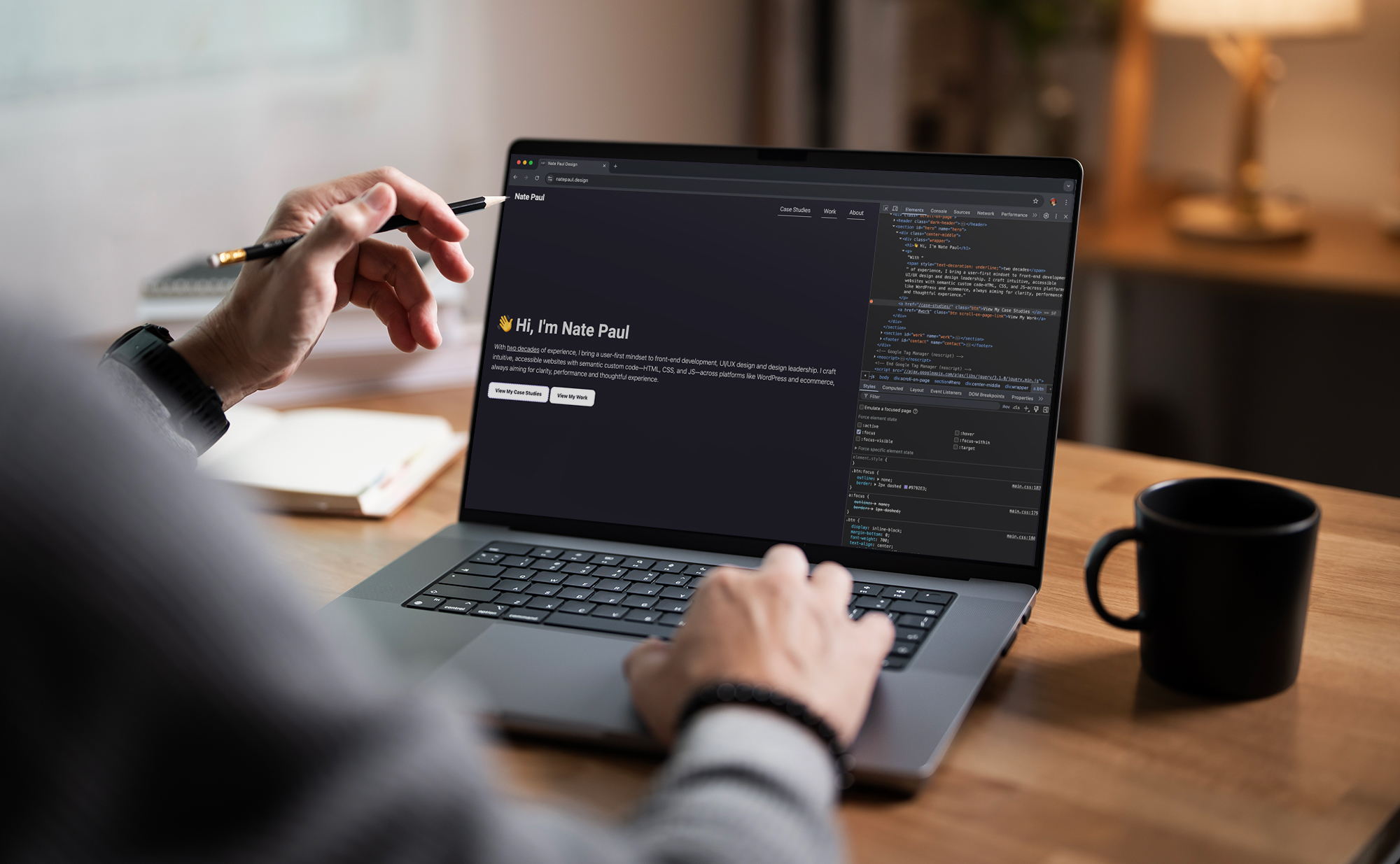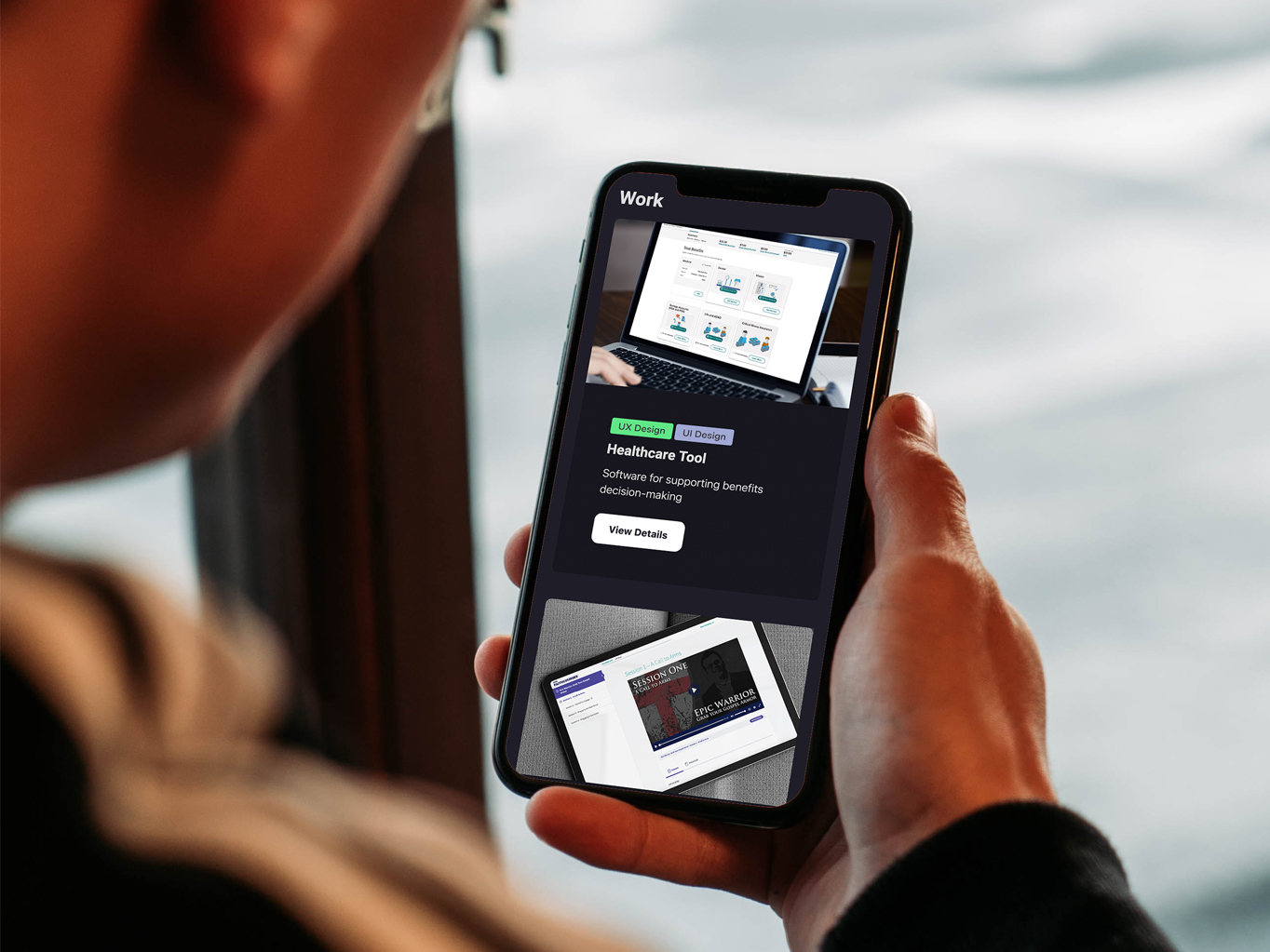Case Study NatePaul.Design
Designing and Developing My Personal Portfolio
Overview
As a hybrid designer-developer, I approached my personal portfolio with the same cart I bring to a client project: a strong focus on clarity, usability, performance and accessibility. The goal was to create a space that reflects my creative sensibility while delivering a frictionless user experience across devices and browsers.
My Role
- Frontend Developer
- UI Design
- UX Design


🎯 Goals
- Clarity and Intuition: Showcase work and capabilities without unnecessary clicks or distractions.
- Performance-First Build: Ensure fast load times, efficient asset use, and a smooth browsing experience.
- Accessible by Design: Comply with WCAG standards to make the site usable by all audiences.
- Modern UX Expectations: Respect users' system-level preferences like dark mode, reduce motion, and high contrast.
- Maintainable and Modular Code: Build a system that could evolve easily over time.
🖌️ Design Approach
The site design emphasizes clarity and restraint—fewer pages, clear headings and a deliberate visual rhythm created through consistent spacing and typography.
- Layout optimized for quick scanning and minimal hover-dependence
- Anchored top navigation with visible state indicators
- Color palette designed for high contrast and legibility
- Automatic Dark Mode: The site detects the user's system preference using the
prefers-color-schememedia query and loads either the light or dark mode accordingly—no toggles needed, just smart defaults
🧱 Tools & Stack
- Templating and Build: Codekit for static site generation, SCSS preprocessing and live-reloading
- Styling: SCSS with Bourbon for a clean, semantic front-end structure
- Interactivity: JQuery for smooth scrolling, dynamic toggles and UI enhancements
- Testing: Google Lighthouse, axe DevTools and manual screen reader tests for performance and accessibility checks
🚀 Performance Optimization
- All assets are compressed and served via CodeKit's optimized build pipeline
- Images are lazy-loaded and sized appropriately for retina/non-retina displays
- JavaScript is deferred to improve time-to-interactive
- SCSS is modular and complied into minified, production-ready CSS
Google Lighthouse Scores
- Performance: 100
- Accessibility: 100
- Best Practices: 100
- SEO: 100
(Scores from most recent audit)
♿️ Accessibility Considerations
- Semantic HTML5 structure with correct heading hierarchy and ARIA roles
- Full keyboard navigation and logical tab order
prefers-reduced-motionrespected for users who disable animations- High-contrast visual modes for strong legibility
- Descriptive alt tags and manually tested screen reader flow
💬 Takeaways
Building this portfolio gave me space to refine the intersection of design, performance, and inclusivity. The result is a modern, minimal site that adapts to the user, loads quickly, and honors accessibility best practices. It's a living example of my approach to thoughtful, standards-driven frontend work.